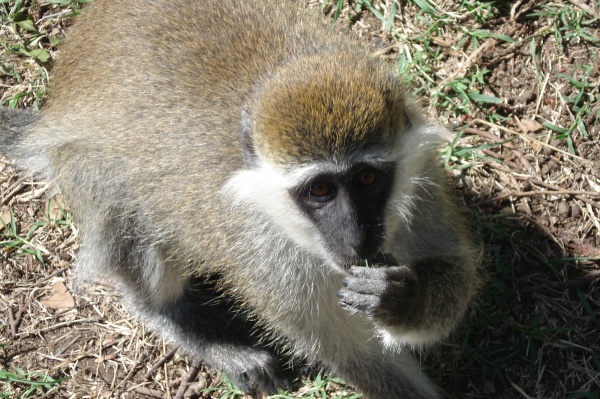Facts About Vervet (Grivet, Green) Monkey
The grivet, also known as the African green monkey or savannah monkey, is a captivating Old World monkey from the genus Chlorocebus. These monkeys are native to Ethiopia, Sudan, Djibouti, and Eritrea. They are easily recognizable by their distinctive appearance: long white tufts of hair on their faces, black facial skin, hands, and feet, and a prominent white stripe above their eyes. Their cheeks are adorned with long white whiskers, their backs are olive-colored, and their underbellies are white.
In terms of size, male grivets typically have a head and body length of about 49 cm, while females are slightly smaller. The tails of males can range from 30 to 50 cm in length, and they weigh between 3.4 to 8.0 kg. These monkeys are highly adaptable and generally inhabit savanna woodlands, particularly near water sources, which are crucial during the dry season.
Grivets are most active in the morning and early evening. They spend a significant portion of the day on the ground foraging for food and retreat to the trees to sleep at night. Their daily activities include grooming, playing, climbing, and play fighting, which are all vital for their survival. Their diet is quite varied, encompassing fruits, vegetables, small mammals, insects, and birds. They also scavenge for human food and require daily access to water.
Regarding reproduction, female grivets tend to have a limited number of mates, whereas males have multiple partners. The gestation period lasts around five and a half months, and females usually give birth to one infant at a time. Newborns remain close to their mothers and are weaned after about six months.
Grivets face several threats, including hunting for bushmeat, habitat destruction, and predators such as large snakes, leopards, and humans. Although they are not currently endangered, conservation efforts are essential to maintain stable populations. Historically, grivets have been featured in ancient Egyptian art and were sometimes kept as pets.

 Ivory Coast
Ivory Coast